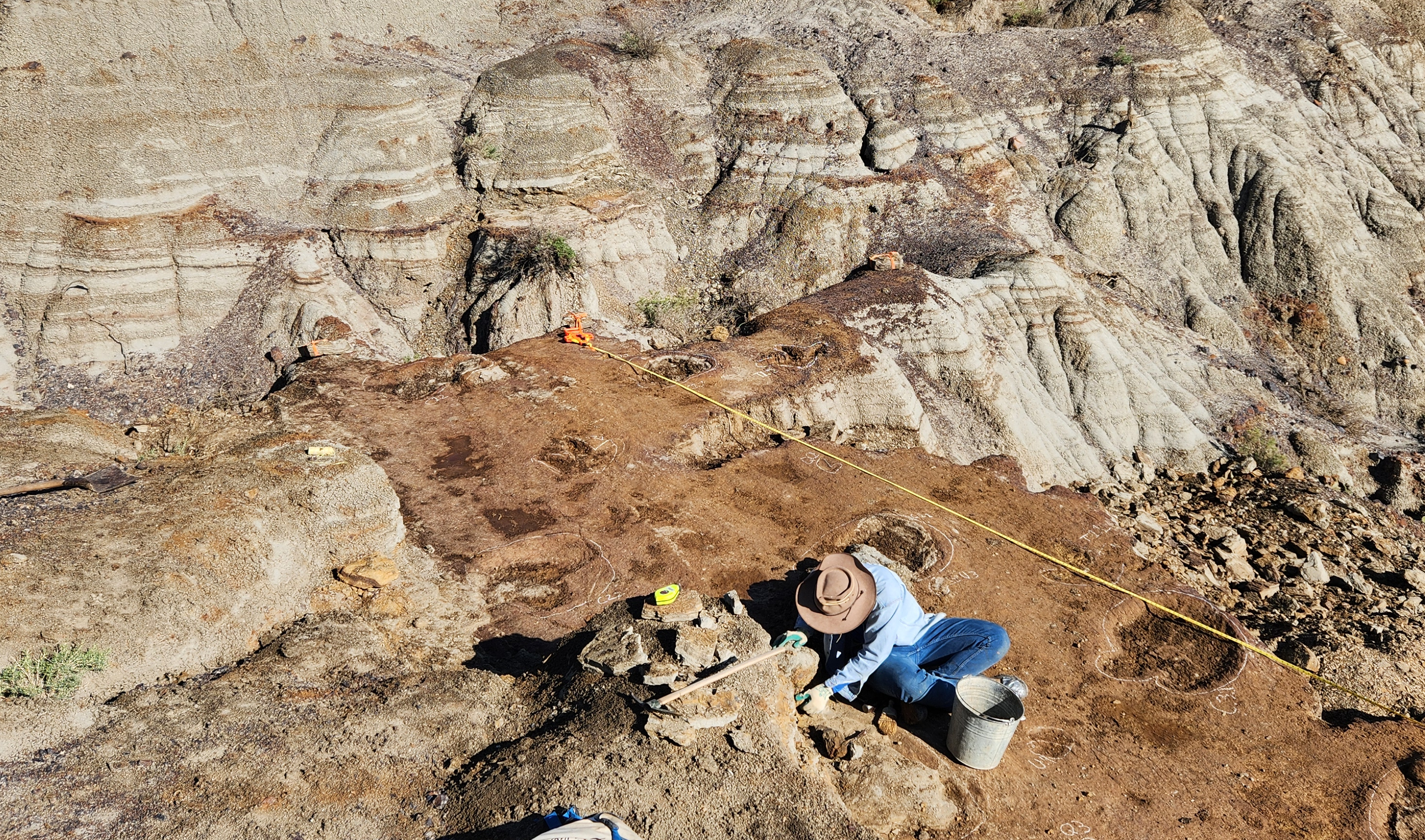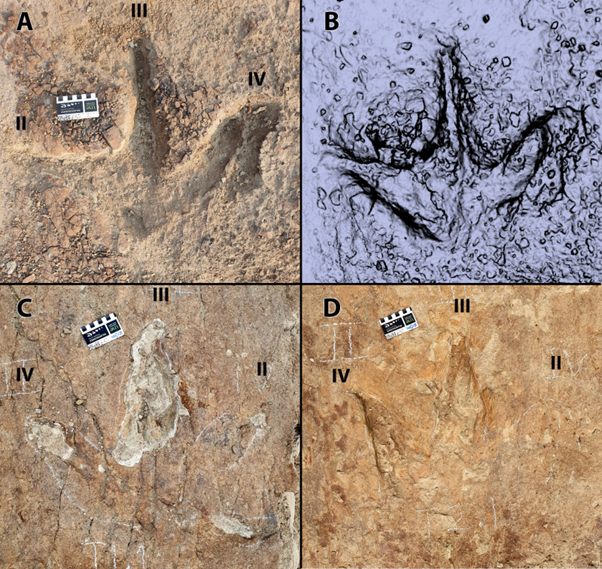A late Cretaceous trackway in Canada contains the footprints of at least nine dinosaurs from four species. Two of the trackmakers were large tyrannosaurs, which may have sparked the motions of the other dinosaurs, or happened to be nearby a few hours earlier or later. However, while that part of the puzzle remains unsolved, the presence of different prey species moving together appears far more certain.
The benefits of herding can be seen in the many animals that do it today, and footprints show the same was true of dinosaurs. In most cases, however, species flock together with those of their own kind. This adds mating opportunities, potential loyalty to kin, and also increases the chances individuals can move at similar speeds, to the chances of evading predators.
Nevertheless, arguably the greatest modern migration sees zebra and wildebeest journey together, combining their numbers against lions and smaller hunters. Now it appears this too could have been something that took place in the dinosaur era, although with only a solitary example to go on, we can’t be sure whether this behavior was an exception or the rule.
“I’ve collected dinosaur bones in Dinosaur Provincial Park for nearly 20 years, but I’d never given footprints much thought,” said Dr Phil Bell of the University of New England in a statement. That’s not surprising. Dinosaurs left millions of footprints in their lives for every bone, but the conditions that preserved each were quite different, so the localities where bones and footprints are found seldom overlap. The steep slopes and rapid erosion of the UNESCO World Heritage site in Alberta, Canada, have yielded only a few hadrosaurid prints, and one from a tyrannosaurid.

The deomorphology of Dinosaur Provincial Park is much more suited to revealing bones than tracks, but both exist.
Image Credit: Dr Brian Pickles, University of Reading
Nevertheless, Bell added, “This rim of rock had the look of mud that had been squelched out between your toes, and I was immediately intrigued.” The rim was found to outline the print of a ceratopsian dinosaur, a herbivorous genus known for its large frills and horns. Once 29 square meters (316 square feet) nearby had been excavated, 13 prints from at least five ceratopsians were revealed.
To the side, three prints from two large tyrannosaurs were found, along with one that was made either by a small theropod dinosaur or a bird. “The tyrannosaur tracks give the sense that they were really eyeing up the herd, which is a pretty chilling thought, but we don’t know for certain whether they actually crossed paths,” Bell said.

The Tyrannosaurid tracks at Skyline tracksite.
Image Credit: Dr Brian Pickles, University of Reading
The mud would have only been able to take the imprints over a short window, but not so short as to prove the tyrannosaurs were chasing the herd. Indeed, the authors note signs that the herd was traveling towards a waterhole, so might have been more thirsty than fearful.
Two prints from a very different species appear among those made by the ceratopsians is a different matter. Although the identification is not definite, Bell and co-authors think they were made by an ankylosaurid, and the alignment and spacing of the prints indicate it was moving with the ceratopsians. It resembles the tracks of Ruopodosaurus clava, an ichnotaxon, or species known from its tracks and not matched to any bones.
The big unknown is whether all took a common path based on the same motivation, or if they traveled together as a regular thing. The authors note that it is thought the African migrations benefit from the presence of different species, as the variations in sensitivity of sight, smell, and sound maximize the chance of detecting a predator in time. It’s easy to imagine the same was true for dinosaurs.
“Trackways occur while the animals were alive, and whether they were grazing or looking for water or travelling and migrating, it’s very exciting to see a rare glimpse of these behaviours preserved from when they were living animals,” said Dr Sally Hurt of Macquarie University in a different statement.
The tyrannosaurid tracks could not be matched to any of the species whose bones have been found in the park, nor to a specific ichnotaxon.
“Using the new search images for these footprints, we have been able to discover several more tracksites within the varied terrain of the Park, which I am sure will tell us even more about how these fascinating creatures interacted with each other and behaved in their natural environment,” said Dr Brian Pickles of the University of Reading.
“It was incredibly exciting to be walking in the footsteps of dinosaurs 76 million years after they laid them down.”
The study is open access in PLOS ONE.
Source Link: First Evidence Of A Dinosaur Herd Combining Two Species Revealed In Cretaceous Tracks